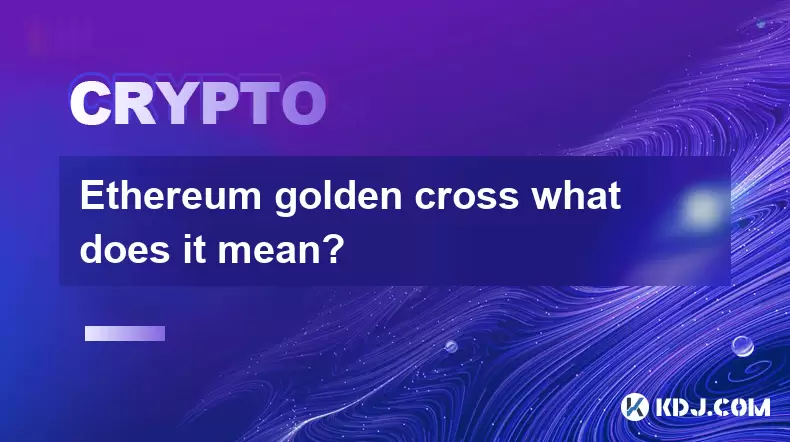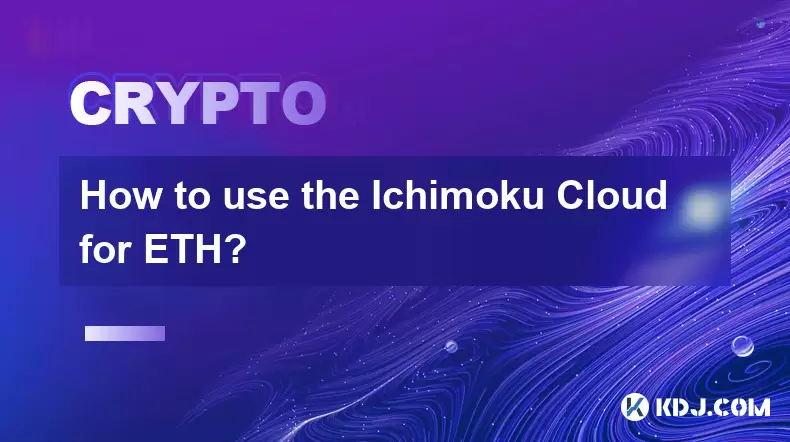-
 Bitcoin
Bitcoin $117400
-0.46% -
 Ethereum
Ethereum $3768
0.60% -
 XRP
XRP $3.551
2.09% -
 Tether USDt
Tether USDt $1.000
0.00% -
 Solana
Solana $203.2
11.30% -
 BNB
BNB $770.9
1.92% -
 USDC
USDC $0.9999
0.01% -
 Dogecoin
Dogecoin $0.2709
-0.02% -
 Cardano
Cardano $0.9024
4.49% -
 TRON
TRON $0.3139
0.60% -
 Hyperliquid
Hyperliquid $45.60
-1.41% -
 Stellar
Stellar $0.4730
-1.34% -
 Sui
Sui $4.025
2.15% -
 Chainlink
Chainlink $19.79
2.19% -
 Hedera
Hedera $0.2724
-2.39% -
 Avalanche
Avalanche $25.93
3.05% -
 Bitcoin Cash
Bitcoin Cash $524.0
-1.83% -
 Shiba Inu
Shiba Inu $0.00001558
0.50% -
 Litecoin
Litecoin $116.7
-0.30% -
 UNUS SED LEO
UNUS SED LEO $8.996
0.00% -
 Toncoin
Toncoin $3.334
1.83% -
 Polkadot
Polkadot $4.506
0.34% -
 Uniswap
Uniswap $10.99
4.83% -
 Ethena USDe
Ethena USDe $1.001
0.03% -
 Pepe
Pepe $0.00001461
3.17% -
 Monero
Monero $320.3
-1.01% -
 Bitget Token
Bitget Token $4.935
0.36% -
 Dai
Dai $0.9998
0.00% -
 Aave
Aave $322.4
-1.25% -
 Bittensor
Bittensor $455.6
9.33%
Ethereum golden cross what does it mean?
The Ethereum golden cross, where the 50-day MA crosses above the 200-day MA, signals potential bullish momentum and is closely watched by traders for possible upward price movement.
Jul 21, 2025 at 05:07 pm

Understanding the Ethereum Golden Cross
The Ethereum golden cross is a technical indicator used in cryptocurrency trading that signals a potential bullish trend in price movement. This occurs when the 50-day moving average crosses above the 200-day moving average, suggesting that short-term momentum is overtaking long-term bearish sentiment. For Ethereum (ETH), this pattern is often watched closely by traders and analysts as a sign of possible upward movement.
The golden cross is not exclusive to Ethereum; it applies to traditional markets and other cryptocurrencies as well. However, given Ethereum's status as the second-largest cryptocurrency by market capitalization, the implications of a golden cross on ETH can have broader market influence. Investors often interpret this as a buying opportunity, especially if it coincides with strong volume and positive news.
It is important to note that the golden cross does not guarantee a price surge but rather indicates a shift in market sentiment.
How the Ethereum Golden Cross Is Formed
The formation of the Ethereum golden cross involves two key moving averages:
- 50-day moving average (MA) – This tracks the average price of Ethereum over the last 50 days and is more sensitive to recent price changes.
- 200-day moving average (MA) – This is a longer-term average that smooths out price volatility and reflects the broader trend.
When the 50-day MA rises above the 200-day MA, it signals that short-term buyers are gaining control and that the price may be entering a new uptrend. This often follows a period of consolidation or a downtrend, where the 50-day MA has been below the 200-day MA (a bearish signal known as the "death cross").
The actual crossing point is significant, but many traders also look at the volume during the crossover to confirm the strength of the move. High trading volume during the golden cross can reinforce the bullish signal.
Historical Context of Ethereum Golden Crosses
Ethereum has experienced several golden crosses throughout its history. These events have often preceded notable price rallies. For example, during the 2020–2021 bull run, Ethereum underwent a golden cross in early 2021, which coincided with a surge in DeFi adoption and the rise of NFTs.
Analyzing past golden cross events can help traders understand the potential magnitude of a price move. While each market cycle is unique, historical patterns can offer insights into investor psychology and market behavior. Some analysts use tools like Fibonacci retracement levels or Relative Strength Index (RSI) alongside the golden cross to improve their trading decisions.
However, not all golden crosses lead to strong rallies. In some cases, the market may false break above the 200-day MA only to fall back below it. This phenomenon is known as a false golden cross and can mislead traders who act on the initial signal.
Technical Analysis of the Ethereum Golden Cross
To analyze the Ethereum golden cross effectively, traders should consider the following elements:
- Timeframes – The golden cross is most reliable on daily or weekly charts. Shorter timeframes like hourly charts can generate false signals due to increased volatility.
- Volume confirmation – A surge in trading volume during the crossover can validate the strength of the bullish signal.
- Support and resistance levels – Identifying key price levels near the golden cross can help traders set stop-loss and take-profit points.
- Market sentiment – Positive news, such as upgrades to the Ethereum network (e.g., the Merge), can reinforce the golden cross signal.
Traders often combine the golden cross with other technical indicators like MACD (Moving Average Convergence Divergence) or Bollinger Bands to filter out noise and enhance accuracy.
Trading Strategies Based on the Ethereum Golden Cross
Some traders use the Ethereum golden cross as a buy signal, while others wait for a pullback or consolidation before entering a position. Here are a few strategies:
- Entry on the crossover – Buy as soon as the 50-day MA crosses above the 200-day MA.
- Wait for a retest – Enter a position after the price pulls back to the moving averages and bounces.
- Use of stop-loss orders – Place a stop-loss just below the 200-day MA to manage risk.
- Take profit at Fibonacci levels – Set profit targets based on key Fibonacci extension levels.
It's also essential to monitor on-chain metrics, such as exchange inflows and outflows, whale transactions, and gas fees, to complement the technical signal provided by the golden cross.
Limitations and Risks of the Ethereum Golden Cross
While the Ethereum golden cross can be a powerful indicator, it has its limitations. One major drawback is that it is a lagging indicator, meaning it confirms a trend after it has already started. By the time the crossover occurs, a significant portion of the move may already be priced in.
Additionally, markets can be manipulated or influenced by external factors such as regulatory news, macroeconomic conditions, or sudden shifts in investor sentiment. These can distort the effectiveness of technical indicators like the golden cross.
Another risk is the possibility of a whipsaw, where the price briefly crosses above the 200-day MA and then quickly reverses. Traders who enter positions based solely on the golden cross without additional confirmation may find themselves in losing trades.
Frequently Asked Questions
Q: How often does Ethereum experience a golden cross?
A: Ethereum typically sees a golden cross during major market cycles. Historically, these events occur every 12 to 18 months, depending on market conditions and broader crypto trends.
Q: Can the Ethereum golden cross be used for short-term trading?
A: While the golden cross is more effective on daily or weekly timeframes, some traders attempt to use it on shorter timeframes. However, false signals are more common in intraday charts due to increased volatility.
Q: What other indicators should be used with the Ethereum golden cross?
A: Popular complementary indicators include the MACD, RSI, volume analysis, and Fibonacci retracement levels. These help confirm the strength and validity of the trend.
Q: Is the Ethereum golden cross more reliable than the death cross?
A: Neither is inherently more reliable. Both are technical signals that should be used with other tools and analysis methods. The golden cross suggests a potential bullish trend, while the death cross warns of a bearish shift.
Disclaimer:info@kdj.com
The information provided is not trading advice. kdj.com does not assume any responsibility for any investments made based on the information provided in this article. Cryptocurrencies are highly volatile and it is highly recommended that you invest with caution after thorough research!
If you believe that the content used on this website infringes your copyright, please contact us immediately (info@kdj.com) and we will delete it promptly.
- XRP, Bitcoin, Ripplecoin: Navigating the Crypto Landscape in 2025
- 2025-07-22 20:30:13
- Cardano Ecosystem Watch: Can PayFi Token Remittix Trigger an ADA Overtake?
- 2025-07-22 20:50:13
- JasmyCoin Price Forecast: Chart Analysis Points to Potential Surge
- 2025-07-22 20:55:13
- Remittix, XRP, and Dogecoin: What's Hot in the Crypto Game Right Now?
- 2025-07-22 20:10:14
- BlockchainFX, PEPE, and USDT: What's the Buzz in the Crypto Jungle?
- 2025-07-22 18:50:12
- Ripple's RLUSD: Institutional Backing Fuels Stablecoin Ascent
- 2025-07-22 18:30:12
Related knowledge

What is Chainlink (LINK)?
Jul 22,2025 at 02:14am
Understanding Chainlink (LINK): The Decentralized Oracle NetworkChainlink is a decentralized oracle network designed to bridge the gap between blockch...

What is Avalanche (AVAX)?
Jul 22,2025 at 08:35am
What is Avalanche (AVAX)?Avalanche (AVAX) is a decentralized, open-source blockchain platform designed to support high-performance decentralized appli...

What is Polkadot (DOT)?
Jul 19,2025 at 06:35pm
Understanding the Basics of Polkadot (DOT)Polkadot (DOT) is a multi-chain network protocol designed to enable different blockchains to transfer messag...

What is Monero (XMR)?
Jul 21,2025 at 10:07am
What is Monero (XMR)?Monero (XMR) is a decentralized cryptocurrency designed to provide enhanced privacy and anonymity for its users. Unlike Bitcoin a...

How to add indicators to Ethereum chart on TradingView?
Jul 19,2025 at 07:15am
What Is an Ethereum Chart on TradingView?The Ethereum chart on TradingView is a visual representation of the price movement of Ethereum (ETH) over a s...

How to use the Ichimoku Cloud for ETH?
Jul 18,2025 at 09:56pm
Understanding the Ichimoku Cloud and Its ComponentsThe Ichimoku Cloud, also known as Ichimoku Kinko Hyo, is a versatile technical analysis tool that p...

What is Chainlink (LINK)?
Jul 22,2025 at 02:14am
Understanding Chainlink (LINK): The Decentralized Oracle NetworkChainlink is a decentralized oracle network designed to bridge the gap between blockch...

What is Avalanche (AVAX)?
Jul 22,2025 at 08:35am
What is Avalanche (AVAX)?Avalanche (AVAX) is a decentralized, open-source blockchain platform designed to support high-performance decentralized appli...

What is Polkadot (DOT)?
Jul 19,2025 at 06:35pm
Understanding the Basics of Polkadot (DOT)Polkadot (DOT) is a multi-chain network protocol designed to enable different blockchains to transfer messag...

What is Monero (XMR)?
Jul 21,2025 at 10:07am
What is Monero (XMR)?Monero (XMR) is a decentralized cryptocurrency designed to provide enhanced privacy and anonymity for its users. Unlike Bitcoin a...

How to add indicators to Ethereum chart on TradingView?
Jul 19,2025 at 07:15am
What Is an Ethereum Chart on TradingView?The Ethereum chart on TradingView is a visual representation of the price movement of Ethereum (ETH) over a s...

How to use the Ichimoku Cloud for ETH?
Jul 18,2025 at 09:56pm
Understanding the Ichimoku Cloud and Its ComponentsThe Ichimoku Cloud, also known as Ichimoku Kinko Hyo, is a versatile technical analysis tool that p...
See all articles

























































































